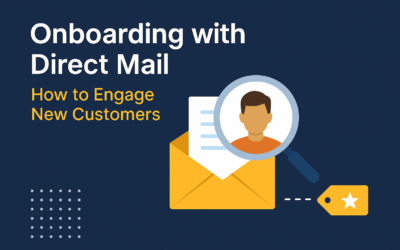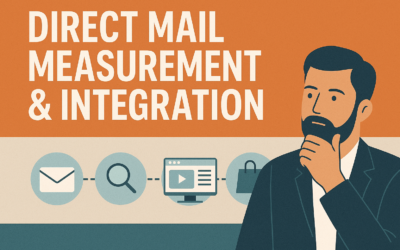The idea of triggered messaging is gaining momentum across all channels. In large part it’s driven by the increasing ability of savvy B2C marketers to leverage their point of sale data, ecommerce data or CRM data to send audience of one messaging.
There are many valid reasons to trigger messaging. Here are a few that we see.
- Upsells or cross-sells based on a recent purchase
- Onboarding messaging for new customers
- Customers at risk of churn – they’re on the verge of falling out of their normal buying frequency or pattern.
- Profile – based – i.e. a birthday, anniversary, age, etc.
- New movers
- Lifestyle triggers, i.e. the birth of a child, a wedding, a retirement
- Based on web visits – empty cart remarketing or presenting options based on site visit behavior
- As a part of customer journeys
Many of you have been doing this with email for a while. Variable data print makes it very practical to consider as part of your direct mail mix. You should especially consider direct mail in these circumstances:
- The customer is high value
- They don’t respond to email
- You don’t have a valid email
- The additional touch point creates sufficient incremental revenue
Triggered direct mail can be very cost effective if done right. The idea that you can throw all the pieces for multiple campaign objectives into one data bucket can lead to big automation and postage savings. The creative for each campaign can be unique.
Here are a few tips we think you should bear in mind so you can do this very effectively:
- Standardize direct mail package specifications: use the same stock, size and print configuration for as many of the pieces as possible. This will enable you to reduce set-up costs and increase potential for postage savings. And, you can avoid the 2-4 day slowdowns that occur when a presort house is used.
- Aggregate data and standardize data output formats. Data can call the right creative based on the campaign objective. PrintComm is really good at bolting together multiple campaigns to drive down cost.
- Pick a frequency that makes sense – some items need to be sent real fast, i.e. suggested purchases based on today’s purchase, communications based on web visits, and abandoned carts. Others need to be sent fairly often but don’t have the same kind of urgency like new movers, folks at risk of churn, and birthdays. Many companies get away with weekly frequency at the outset.
Variable full color direct mail is becoming increasing cost effective due to the new technology and the ability of tech smart print providers, like PrintComm, to integrate with your data.



